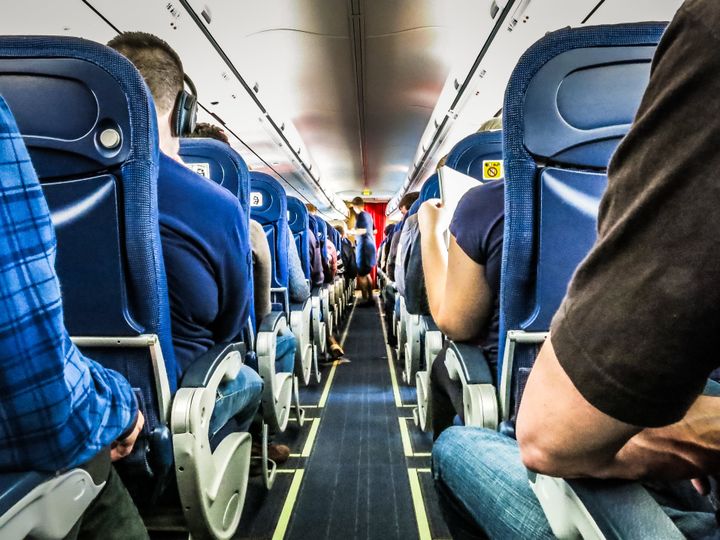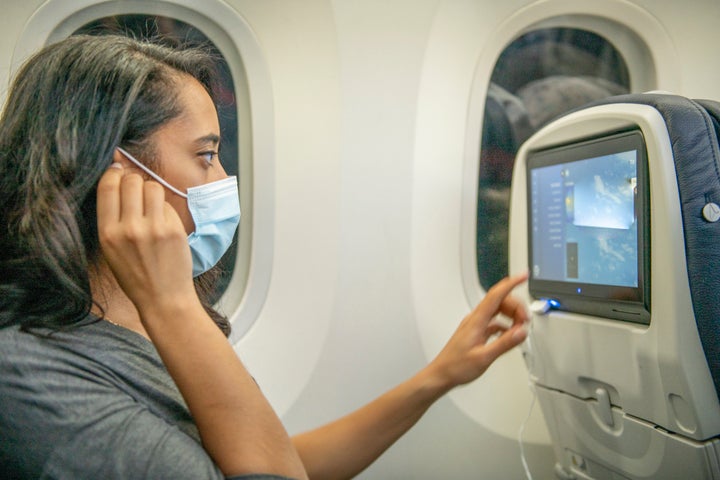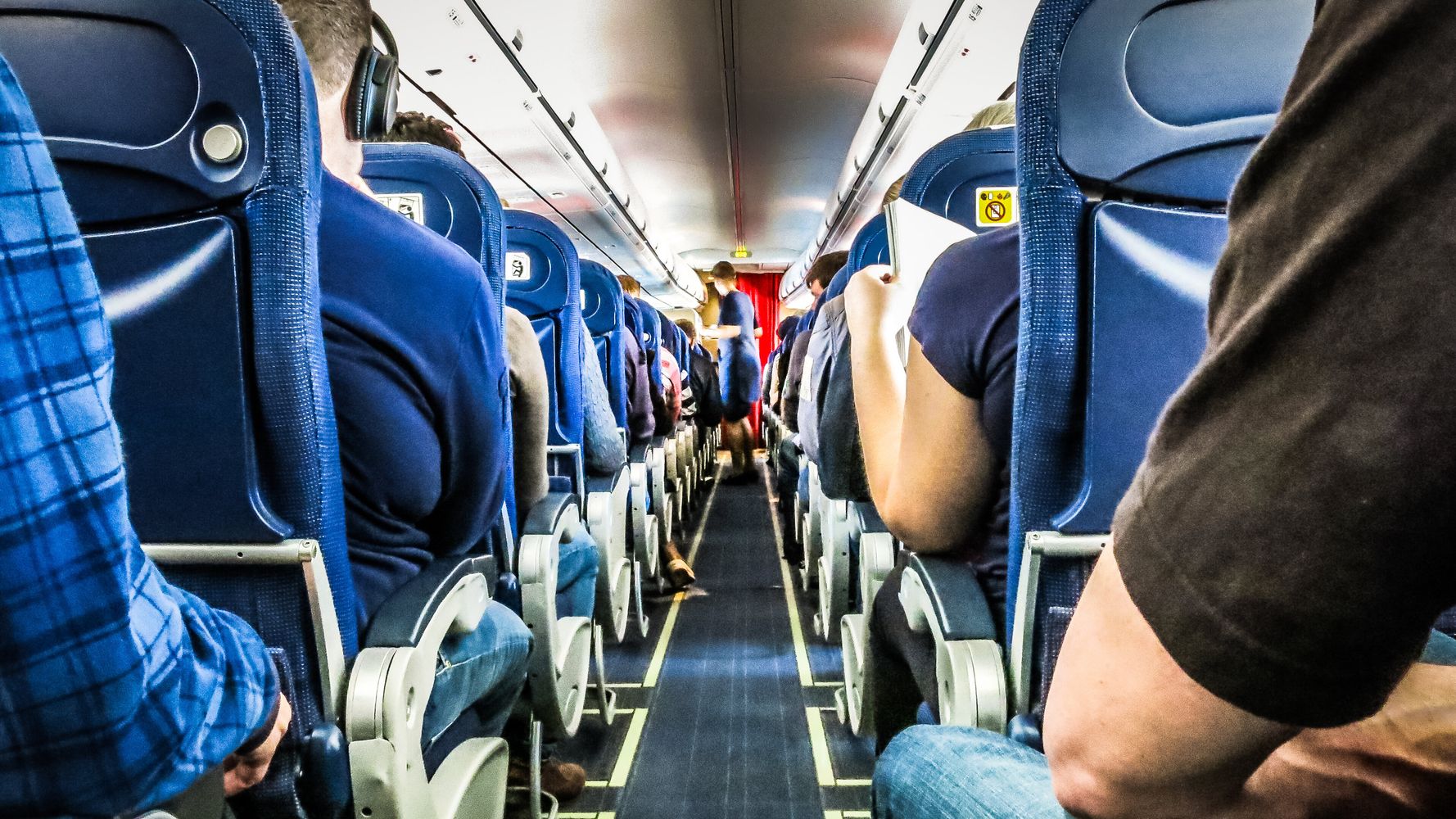
Perhaps one of the biggest pains of air travel is the part where you have to sit for hours in a tight, cramped seat.
Over the years, there have been debates about the ethics of reclining your seat, sharing your armrests and other aspects of airplane etiquette. And people are divided when it comes to the question of how to use certain features ― or whether you should abstain entirely.
So what is the right way to approach these in-flight considerations? Below, five etiquette experts share the rules and general guidelines they follow as air travelers.
Reclining Your Seat
“Whether to recline your seat is a matter of polite awareness,” Jodi R.R. Smith, president of Mannersmith Etiquette Consulting, told HuffPost. “We want to be able to maximize our comfort without inconveniencing anyone else. This is quite a challenge in the shrinking seats found nowadays on airplanes.”
She noted that reclining is the norm for red-eye or long-haul flights, where there’s an assumption that passengers will at least attempt to sleep. But for quick trips of under two hours, it’s better to just remain in the upright position.
If you want to recline your seat, show common courtesy to the person sitting behind you. Look back and make sure they aren’t super tall and already cramped. They could also be juggling a baby on their lap or wearing a knee brace. These would all be reasons to refrain from reclining. If you ultimately decide to do it, at least give a warning.
“It’s polite to alert someone behind you before reclining one’s seat,” said Nick Leighton, an etiquette expert and co-host of the podcast “Were You Raised By Wolves?” “I know I’ve nearly had my laptop snapped in half on more than one occasion by a seat that rapidly reclined without warning. And when reclining and going back up, it’s considerate to do it slowly. It’s easy to knock a hot cup of coffee off a tray with a seat that moves quickly.”
You might also consider just reclining partly, if possible.
“For those fortunate enough to be seated in first or business class, this is not an issue,” Smith said. “There is ample room to recline without impacting any other passenger’s personal space.”
Sharing Armrests
“The most commonly asked questions still remains ‘Who gets the armrest when seated in the middle seat?’” said Diane Gottsman, an etiquette expert, the author of “Modern Etiquette for a Better Life” and founder of the Protocol School of Texas. “The most obvious answer, and the unspoken rule of protocol, is the person sitting in the most uncomfortable seat ― the middle ― gets the armrests on both sides.”
Life etiquette expert Juliet Mitchell, also known as Ms. J, echoed this advice, noting that it’s simply about common courtesy and empathy.
“Let’s face it, this may not ever be a win-win situation,” she said. “However, if you are fortunate enough to have the window seat, you can look out on the lovely clouds and monitor the landing. If you get the aisle, you may be able to stretch out a bit, or at the very least, you can get up and stretch without disturbing others. The middle seat person is stuck in the middle. So give the middle person a break and let that person be the decision maker with armrests.”
If you’re in a row with only two seats, the armrest between them should be shared, as there is no undesirable middle seat in that scenario.
“Now, for a row of four seats, 1–2–3–4, passenger 2 has the armrest between 1 and 2, passenger 3 has the armrest between 3 and 4,” Smith explained. “The armrest between 2 and 3 is shared.”
There are exceptions to the armrest rules, however.
“If you are a tiny human and the person next to you is folding themselves into a yoga pose to fit in the seat, you should share the armrest, even if it is ‘yours,’” Smith said. “Yes, humans are territorial creatures and when a resource is a premium, our thoughts quickly turn to what we can claim. But what separates us from many animals is our ability to empathize and work together. If you do not need space, offer to share.”
Changing Seats
Try to be mindful of others when it comes to moving seats.
“If the door of the cabin closes and you find yourself seated in the middle seat, next to the aisle seat, and no one is claiming the window seat, move over to give your seatmate and yourself more room,” Gottsman said. “If someone is next to you and does not move, you can say: ‘It looks like we are lucky enough to have a little extra room. Would you like to move across and we can use this seat for our extra magazines and laptops?’ It’s a subtle way of saying ‘please move over.’”
Gottsman also offered advice for what to do if someone asks you to swap seats with them.
“If someone asks you to change places with them so they can be closer to their family members, and the seats are equal, take one for the team and do it,” she said. “If it’s not an equal move and you will get stuck in the middle seat, you can say, ‘I’m sorry, I am going to have to say no.’ They will move along and ask someone else to change seats next.”

Dealing With The Back Of The Seat
As previously noted, there really isn’t much space between airplane rows these days, so it’s not uncommon to feel movement at the back of your seat. Keep this in mind when you’re dealing with the seatback pocket in front of you.
“Seat pockets were designed to hold safety information, air sickness bags, and the occasional magazine,” Smith said. “They are not designed as [a] footrest. Please do not try to hook the backs of your heel into the opening, as this may cause lower back distress to the passenger whose back you are now pressing.”
She gave similar advice regarding the tray table.
“It is there for drinks, snacks, and the occasional meal. It was not designed to support your laptop, as a substitute drum set, or a drafting table. Your tray table is to hold lighter items,” Smith said.
If you do need to use the tray for your computer or iPad, be considerate of how much motion you create.
“You should not be pounding away on your laptop keys or engaging [in] any ongoing jiggling, bouncing or tapping,” Smith said. “The tray table is attached to the seat in front of you. Every movement of your tray table causes additional, and usually unwanted, movement of that seat and should be avoided whenever possible.”
On the flip side, try to be polite to the passengers behind you if you need to ask them to ease up on their disturbance.
“Avoid glares and sighs when a child starts to cry or accidentally kicks the back of your seat,” Gottsman said. “If someone kicks the back of your seat consistently, you can turn around and ask if they wouldn’t mind being a bit more careful, saying something like ‘I know we are in tight quarters, unfortunately I can’t seem to move my seat forward’ with a smile on your face. They will get the message.”
She also urged passengers to speak to the parents, not the child, in these situations.
“In a pleasant but controlled voice, try saying: ‘I know it must be hard to keep those little legs still for so many hours. Would you kindly keep an eye out, because I am trying to work/sleep/meditate/watch a movie and keep getting distracted. Thank you so much,’” Gottsman advised.
Getting Up During The Flight
Naturally, there are times during a flight when passengers need to get up to use the bathroom or take a stretch break. Be respectful of your neighbors during these moments.
“Do not climb over someone without their expressed permission,” Smith said. “Those in the aisle seat should be allowed to rise and enter the aisle so that you can easily access your seat.”
Patricia Rossi, a civility expert and author of “Everyday Etiquette,” urged passengers to minimize time in the bathroom when possible.
“Do your business in the airport,” she said. “That bathroom on the plane is not a day spa, so don’t keep everyone waiting.”
And when you do get out of your seat, don’t treat the plane like your home ― it’s a shared space filled with other people.
“When it comes to airplane etiquette, just because you can do something doesn’t mean you necessarily should,” Leighton said. “Walking around barefoot is certainly something you can do on airplane, but should you?”
General Attitude While Flying
“I worked in the airline industry for over 15 years, so I’m no stranger to rude passenger behavior,” Mitchell said. “Since the advent of COVID-19, rude behavior, in general, has escalated and the airline industry has had to respond to some outlandish behavior to protect the life of passengers and crew alike.”
To help promote a peaceful and civil atmosphere, she urged air travelers to pay attention to the little ways they can show respect for their crew and fellow passengers ― whether it’s using a polite tone when speaking or cutting down on alcohol intake.
“Airplanes these days are tight, and a bit of consideration can go a long way in making everyone more comfortable,” Smith said. “Before I board a plane, with all of the annoyance and indignities, I remind myself that I will be in a chair, in the sky, and how much faster it will be than other modes of transportation. A bit of perspective can shift your attitude towards the positive.”
